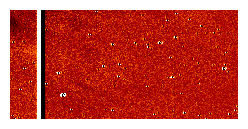
As nice as this is, I am not in the least surprised. SOHO's Kreutz-group comets are very "clumpy", for want of a better word. We frequently see them arrive in pairs or sometimes trios, and the big bright ones in particular will often have a companion comet. I suspected we would get at least one with Comet Lovejoy and indeed we do. It's much more typical of the size and brightness of Kreutz comets we see, and offers a wonderful comparison to highlight just how special Comet Lovejoy is.
So what is this new comet called? Is it another "Comet Lovejoy"? Sadly not. It looks to me like it was actually spotted in the LASCO C3 images by seasoned comet hunter Zhijian Xu at Dec 14 2011 11:48:48. So will it be Comet Xu?? No again. It will be Comet SOHO, number 2190-something, I think. Oh, and notice how it's orbit is obviously slightly different from Lovejoy's? That's also something we see all the time; the companion comets are frequently in slightly different orbits. They are obviously closely related though and the smaller one must have fragmented from Lovejoy some significant time ago, and with some slight (non-gravitational) force between them to "push" them apart like this. These kinds of break-ups are theorized to happen decades before they reach the Sun in order for them to have this kind of separation in space, though this process is not well-known or well-understood at all. It one reason that studying these Kreutz comets is so important, as this knowledge can be applied to all comets and solar system bodies, and give a broader understanding of their orbital and physical evolution.



....please try to explain how a "dirty ball of ICE" survived the SUN b4 you use terms like 'cute' in your article....moron.....